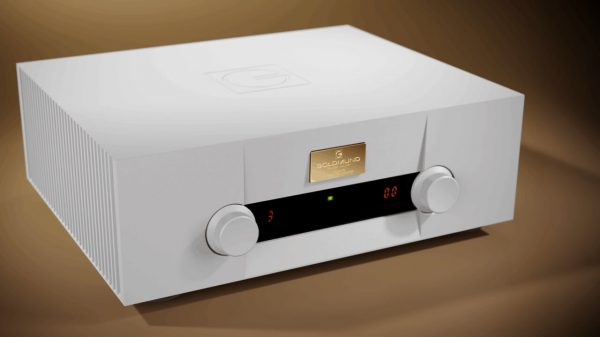Consumer audio sales of active loudspeakers are increasing, with more solutions available than ever before. Is it just a matter of convenience or are active systems better? The “active vs passive speakers” debate seems to be taking on new life in 2021.
I am not one of those audiophiles that tends to fall into a particular camp. For many years now, I have only used digital sources but that is merely a matter of convenience. I do not believe that digital sources sound better than analog, or vice versa. Over my 30+ year audiophile journey, I have heard great systems comprising digital and analog source components.
It is a similar story when it comes to the contentious issue of cables. Some of you may have seen my YouTube video on cables, Hifi Myths & Misconceptions – Hifi cables. I have not examined enough cables to draw the conclusion that high end cables definitely offer better performance than a well-engineered pro audio cable.
What I can tell you is that my experiences have led me to believe that cables do alter the sound of a system. I don’t think it is merely a matter of placebo or confirmation bias.
Cables are a rabbit hole that I will explore at another time. For the purposes of today’s discussion, I would like to comment on the benefits and drawbacks of active speakers as opposed to their more common passive counterparts. I should start by explaining what an active system is. It is not a speaker system that has built-in amplification, despite the marketing claims of some manufacturers.

That would be a powered speaker. An active system relates to the crossover. In a traditional passive system, the crossover comes after the amplifier in the signal chain, filtering the high frequencies to the tweeter and the mid/low frequencies to the mid/woofer (in a two-way design). An active system places the crossover before the amplifier in the signal path. The signal is divided up when it is still a small signal by electronic (active) components, hence the name.
All things being equal, an active system has several benefits over a passive system. I pointed these out in more detail in my recent review of the excellent ATC SCM 19A active speakers. Essentially, the main benefits are, that by dividing the signal electronically when it is small, the designer can achieve lower distortion and better phase coherence across the frequency range (fewer timing issues).
The other significant advantage is that because there is nothing between the amplifier and speaker driver, the direct coupling results in a much better damping factor. If done right an active system should give a cleaner, more dynamic sound with better bass control.
All things are seldomly equal, as Peter Thomas pointed out when I interviewed him on my channel, Talking speaker design with PMC.
Peter co-founded PMC, one of the most respected loudspeaker manufacturers in the industry. His son Oliver now heads up their R&D department. PMC supply active monitors to some of the most famous studios, mixing engineers and artists in the world.

Peter mentioned in that interview that active systems are not always better than passive systems. An active system requires each driver to have a dedicated amplifier. A two channel, three-way speaker system would require six channels of amplification. Sometimes, a passive speaker driven by one decent stereo amplifier, will sound better than the equivalent active speaker, driven by six amplifier modules of inferior quality. However, he did proclaim, “ultimately the best actives [loudspeakers] will always beat the best passives [loudspeakers].”
“Ultimately the best actives will always beat the best passives.”Peter Thomas, Co-founder Professional Monitor Company Ltd (PMC)
As always in this hobby, everything comes down to implementation. My 2020 Product of the Year was an active speaker system; the Acoustic Energy AE1.

My YouTube video review of this extraordinary active speaker can be found here; Acoustic Energy AE1 Active Speaker Review. It retails for £1,000 in the U.K., in standard finish. I am not one for hyperbole but I was stunned by the performance that this compact, two-way, active system offers.
- Related reading: Audiophile System Builder under $4500 with Acoustics Energy AE1
It is fair to say that I could not put together an amplifier and a passive pair of speakers to compete for similar money.
The pro audio arena embraced active loudspeakers decades ago. Sales of active speakers are increasing in the consumer sector now as well. Many modern consumers do not have the time or ability to audition lots of different speaker-amplifier combinations.
As most active designs tend to have the amplifiers built-in, it is easy to see their appeal. A great sounding stereo solution that takes up minimal real estate.
I can only see the diversity and sales of active solutions increasing. Although, passive components are likely to remain for traditional audiophiles like me. The ability to switch out individual components and tailor the sound just to my needs is hard to give up. However, it could be that for many their next Hi-Fi solution may be an active one.
- Related reading: A British Audiophile’s Hi-Fi Journey On YouTube











































